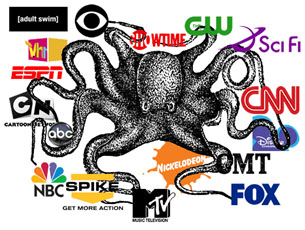Why consumers are saying sayonara to DVR
People are constantly on the go so it only makes sense their favorite TV shows are too, right? Video on Demand, known as VOD, allows you to do just that. Many people nowadays don’t have the time to hit the record button on their DVR between working a 9 to 5, cooking dinner and running errands. Though DVR allows you to ‘skip’ commercials on your recorded shows from the comfort of your own home, would you give that up and use VOD so you can stream shows on the go whenever you want?
The way we consume media has evolved and will continue to evolve as social and mobile expand. People are busy and don’t spend as much quality time in front of their television. How has this impacted media consumption? People do it on the go. Smartphones, tablets and laptops allow consumers to watch their favorite shows, movies, documentaries, etc. on the fly on their own terms. They no longer have to wait to get home to catch a recorded show because of streaming-video services, such as Netflix, Hulu and OnDemand programming from their satellite or cable provider.
Whether you want to watch last night’s episode of The Voice to see who turned their chair and built their team, or catch the latest Modern Family to get a few gut busters in, VOD lets you tune in on your time, at your convenience. Pretty similar to DVR, but it does have its differences. I know what you’re thinking, what’s the catch? This sounds almost too good to be true. There is a slight catch, but is it a complete deal buster? Absolutely not. VOD services typically include ads within their content whereas DVR allows you to fast-forward through commercials. See, that’s not so bad, is it? And, if you’re an experienced VOD user, you know you can still fast forward, just not as fast as the DVR allows. At least that’s how Comcast does it.
to watch last night’s episode of The Voice to see who turned their chair and built their team, or catch the latest Modern Family to get a few gut busters in, VOD lets you tune in on your time, at your convenience. Pretty similar to DVR, but it does have its differences. I know what you’re thinking, what’s the catch? This sounds almost too good to be true. There is a slight catch, but is it a complete deal buster? Absolutely not. VOD services typically include ads within their content whereas DVR allows you to fast-forward through commercials. See, that’s not so bad, is it? And, if you’re an experienced VOD user, you know you can still fast forward, just not as fast as the DVR allows. At least that’s how Comcast does it.
What does this mean to advertisers? Control and exposure. VOD limits, if not removes, the opportunity to skip ads. Even if viewers have limited fast-forward options, they still have no choice but to see your ads, if they’re done well and highlight your logo, call to action or brand (hopefully all three). In exchange for free content, some networks available on demand do not allow viewer’s the function to fast-forward through ads. This feature allows networks and advertisers to control the content presented to and watched by the consumer.
Which would you rather watch? DVR or VOD? You be the judge and share your insight below.




